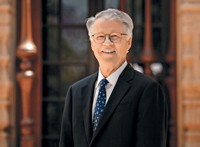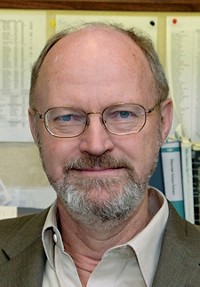Advertisement
Grab your lab coat. Let's get started
Welcome!
Welcome!
Create an account below to get 6 C&EN articles per month, receive newsletters and more - all free.
It seems this is your first time logging in online. Please enter the following information to continue.
As an ACS member you automatically get access to this site. All we need is few more details to create your reading experience.
Not you? Sign in with a different account.
Not you? Sign in with a different account.
ERROR 1
ERROR 1
ERROR 2
ERROR 2
ERROR 2
ERROR 2
ERROR 2
Password and Confirm password must match.
If you have an ACS member number, please enter it here so we can link this account to your membership. (optional)
ERROR 2
ACS values your privacy. By submitting your information, you are gaining access to C&EN and subscribing to our weekly newsletter. We use the information you provide to make your reading experience better, and we will never sell your data to third party members.
Biological Chemistry
ACS Award For Creative Invention
by Ann M. Thayer
February 3, 2014
| A version of this story appeared in
Volume 92, Issue 5
Sponsored by ACS Corporation Associates
Few scientists have their work called transformative. But Marvin H. Caruthers’s development of phosphoramidite chemistry into a practical method is widely acknowledged for revolutionizing DNA and RNA synthesis.
His innovations are “among the most important advances in the history of biology and biotechnology,” says Dan Feldheim, a professor of chemistry and biochemistry at the University of Colorado, Boulder, where Caruthers holds the title of Distinguished Professor of Chemistry & Biochemistry.
Caruthers’s pioneering work resulted in methods now universally used for chemically synthesizing DNA. Prior to his work, DNA synthesis was a laborious, low-yield process that involved the stepwise addition of single-nucleotide bases and repeated purifications to produce polymers only about 10 nucleotides long.
In the early 1980s, Caruthers described synthesis methods that were rapid, reliable, and amenable to automation. His method assembled DNA chains on a solid support using 2'-deoxynucleoside 3'-phosphoramidite derivatives of nucleosides as building blocks. With a 99.9% coupling yield, the method made the construction of chains as long as 300 nucleotides routine and led to the development of now widely used automated gene synthesis machines.
Caruthers’s research has influenced millions of scientists by making synthetic DNA available. “The rapid chemical synthesis of DNA is one of the cornerstone technologies that has fueled the development of biotechnology worldwide and greatly expanded basic research in cell and molecular biology and chemical biology,” says Richard B. Silverman, chemistry professor at Caruthers’s graduate school alma mater, Northwestern University.
Access to long nucleotide sequences enabled many key technological developments. Incorporating them into plasmids made recombinant DNA work possible. Caruthers’s work also enabled the synthesis of DNA-based therapeutics, DNA and RNA aptamer drugs, and reagents for diagnosing disease, for performing polymerase chain reaction amplification reactions, and for whole-genome sequencing.
In turn, these applications became the basis of many commercial endeavors. In 1980, Caruthers, along with collaborators and venture capitalists, established two major biotechnology companies: the gene synthesis machine company Applied Biosystems and Amgen, the largest U.S. biotech company. Between 1996 and 1997, he also cofounded the drug discovery firm Array BioPharma and the software developer Genomica.
“The fact that the Caruthers chemistry is still being used largely in the form that it was invented decades ago attests to the prescience and creativity of the work,” Tufts University professor David R. Walt says. “It has had a lasting impact and will continue to be important in the years to come,” adds Walt, an inventor of microarray technology and one of the founders of the gene-sequencing firm Illumina.
Caruthers has been at the University of Colorado since 1973. He received a B.S. in chemistry from Iowa State University in 1962 and a Ph.D. in chemistry at Northwestern in 1968 under research director Robert L. Letsinger.
In 1980, he was named a Guggenheim Fellow. He was elected to the National Academy of Sciences and the American Academy of Arts & Sciences, and he also received the Elliott Cresson Medal of the Franklin Institute in 1994. Caruthers was awarded the Prelog Medal from the Swiss Federal Institute of Technology, Zurich, in 2004; the National Academy of Sciences Award for Chemistry in Service to Society in 2005; and the National Medal of Science in 2006.
Caruthers will present the award address before the Division of Biological Chemistry and the Division of Organic Chemistry.





Join the conversation
Contact the reporter
Submit a Letter to the Editor for publication
Engage with us on Twitter